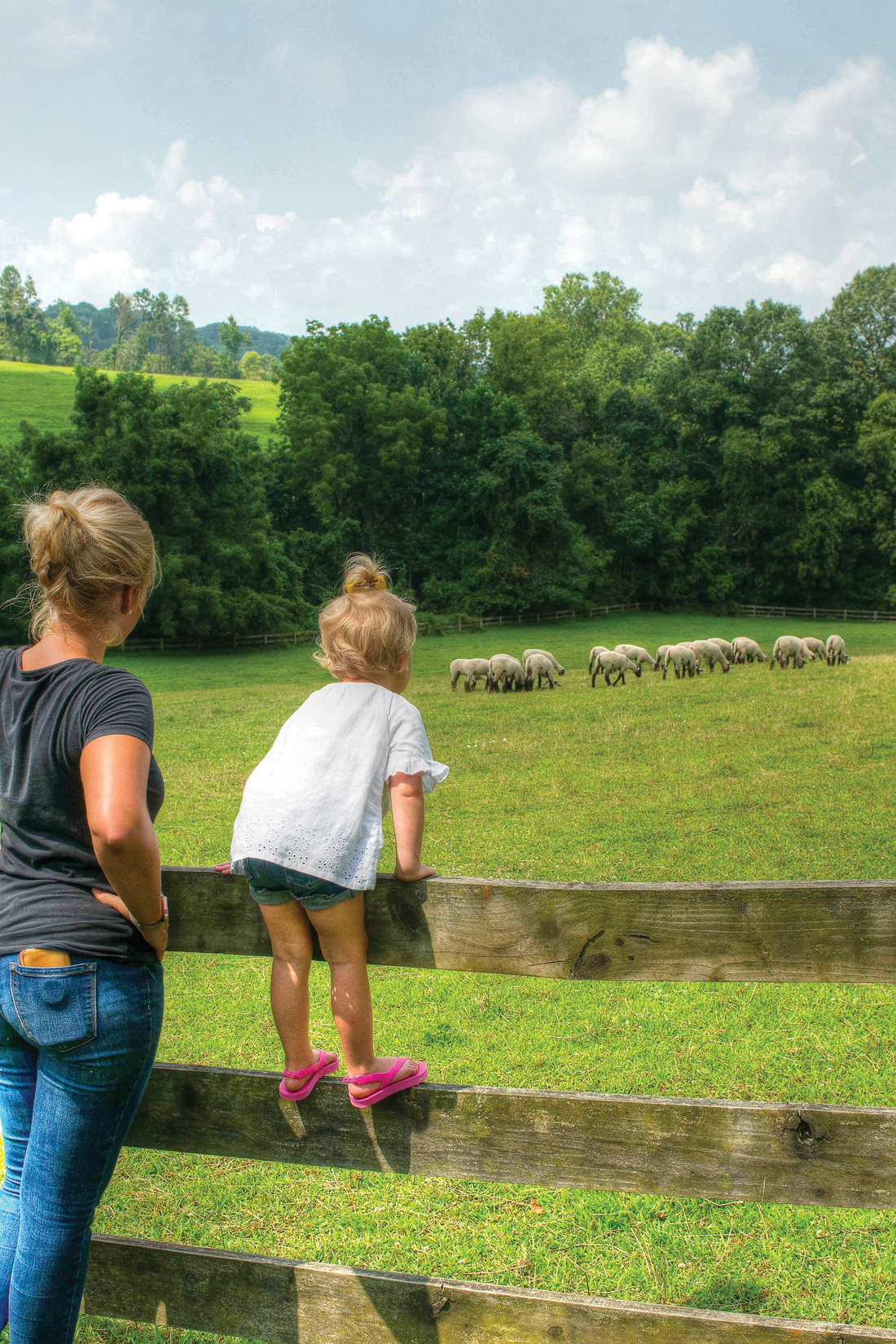
The Binkleys’ herd of sheep grazes in one of the pastures on the family’s 76-acre farm in Conestoga. Kelsey has hopes that her daughter, Avonlea, will follow in her footsteps and compete on the fair/farm show circuit.
Conestoga is home to a 105-year-old farm that becomes a destination for both avid and novice gardeners each April. While plants are the main draw, visitors enjoy viewing the large herd of sheep that put the Binkley family on the map due to their success on the fair and farm show circuit. There’s also a friendly farm dog named Penny on the greeting committee. Welcome to spring, Lancaster County style.
This year marks Tudbink’s 20th season as a garden center. “We’re definitely a destination,” says the farm’s owner, Van Binkley, who adds that for many visitors – especially the younger generation – traveling to Tudbink’s often qualifies as their first time visiting Conestoga. Indeed, it’s a different world. Drive from one end of Main Street to the other and it’s like a trip back in time. “It’s kind of like the land that time forgot,” he says.
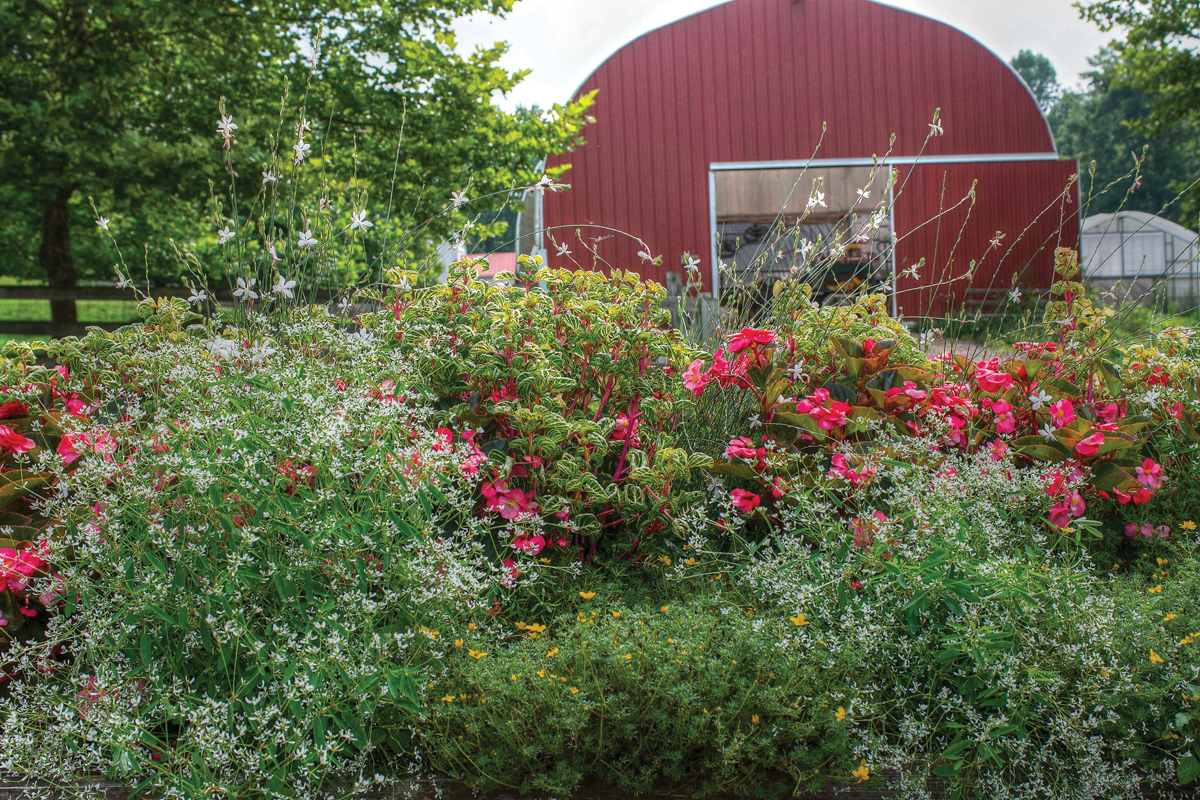
Opening the farm’s greenhouses to retail customers began as an experiment 20 years ago, when Tudbink’s welcomed the public on five Saturdays in the spring.
The observation is not meant to be negative. Taking the New Danville Pike into Conestoga makes for a nice change of pace on a spring afternoon – you automatically slow down and get lost in the scenery. When you reach the western edge of town, you spy the Susquehanna River in the distance. One must literally follow a winding road over the hills and through the woods to reach the valley in which the farm sits.
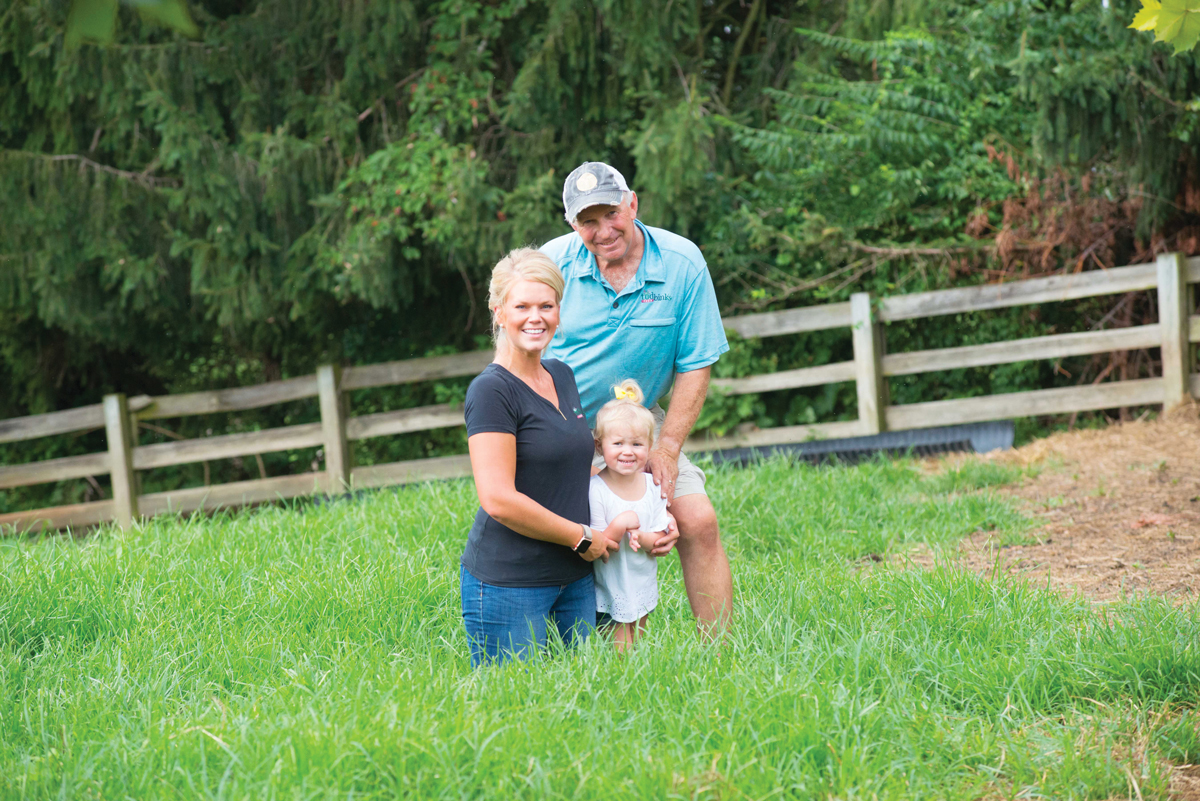
Van Binkley (pictured with Kelsey and Avonlea) and his wife, Beth, left the corporate world in the late ‘80s to devote their time to the family farm. Avonlea is their first grandchild. Kelsey and her husband, Andrew Skworch, will welcome their second child this month.
Van points out that Conestoga wasn’t always the sleepy town it is now. “Conestoga was once a center of commerce and industry,” he says. However, it didn’t have the best of luck going for it. A dynamite factory blew up, a match factory burned down and an ice house was destroyed by flood waters. “Building the Safe Harbor Dam was huge for this area,” Van says of the project that began on April 1, 1930, and finished on September 29, 1931. He adds that workers contributed to the local economy by renting rooms from area homeowners. Each morning, the roads leading to the construction site would be filled with workers walking to the dam. “We have a phenomenal historical society down here,” he says of the nearby Conestoga Area Historical Society that gathers and relays the history of the Penn Manor area. Like Tudbink’s, it also reopens this month.
For more things to do in Conestoga, click here!
Farming to Flowers
The Binkleys’ history in the area began in 1915, when Van’s grandparents, Ira and Minnie Duke, purchased four acres of land for $1,500. “I think they overpaid,” Van says.
Ira was a jack of all trades, as he was a farmer, a mason and a builder. Minnie, unfortunately, died early in life. “My mother was only 10 at the time,” he says of Helen Duke. “She took over the role as the woman of the house.”
Helen, or “Tud” as she was called, met Donald Binkley during World War II. After their marriage, they settled on the farm. Van credits his father for introducing sheep to the farm in 1963. “He got tired of cutting the grass on the hillsides with a scythe and bought some sheep to do the job,” he says. He credits “Tud” for the family’s interest in growing plants, as she was an avid gardener.
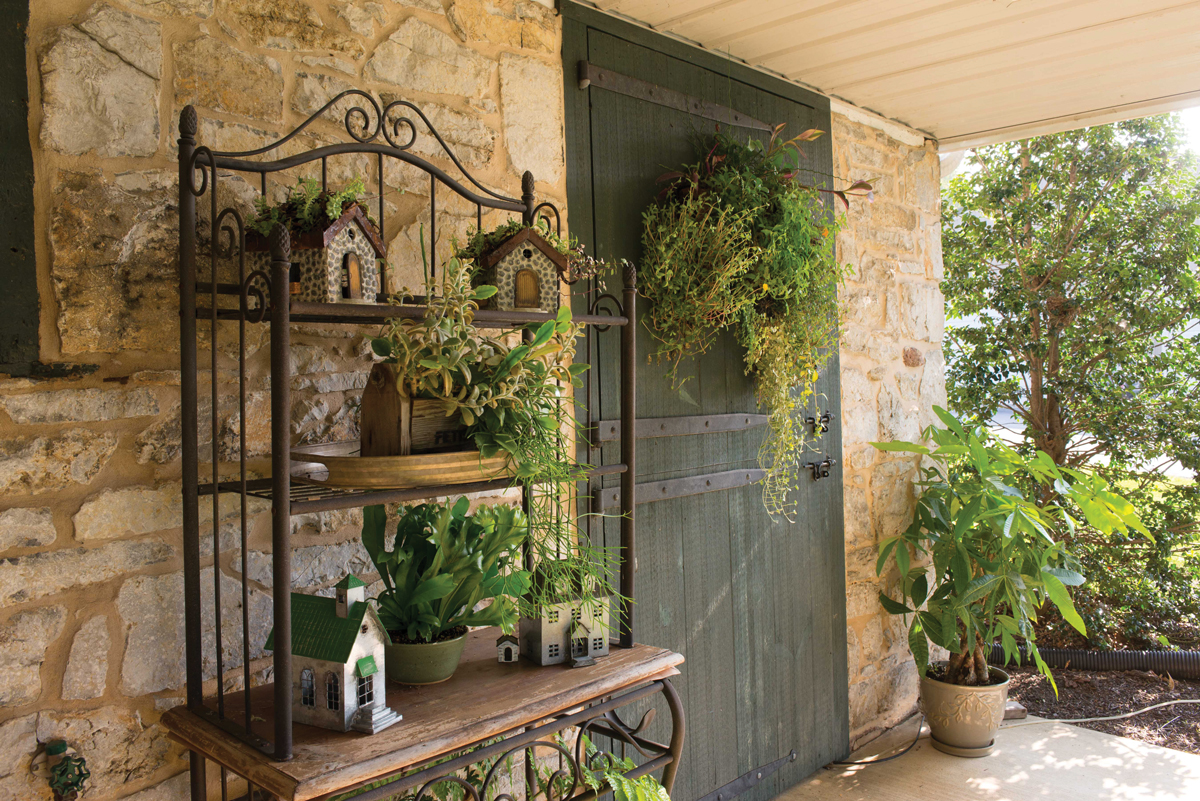
Outdoor-living spaces now bloom with traditional gardening plants and houseplants/tropicals that benefit from spending the summer outdoors.
Van and his wife, Beth, left their corporate jobs in the late 1980s in order to become more involved with the 76-acre farm. The family grew with the birth of Kelsey in 1990 and their son, Nathanael, who arrived a few years later.
The Binkleys began their farming venture with a vegetable business, specializing in trellis tomatoes. They later added seedless watermelons to the menu. “We did everything wrong,” Van admits. They persevered and became successful growers, with the Leola Produce Auction becoming their major client.
In 2000, a hail storm nearly wiped out the operation. Things were so bleak that the Binkleys had to lay off their help – primarily area teens – as they could no longer afford to pay them. Fortunately, quite a few of the youngsters who were invested in learning about farming stayed on. “Over the last 20 years, I’d estimate that about 300 kids have worked here,” says Van.
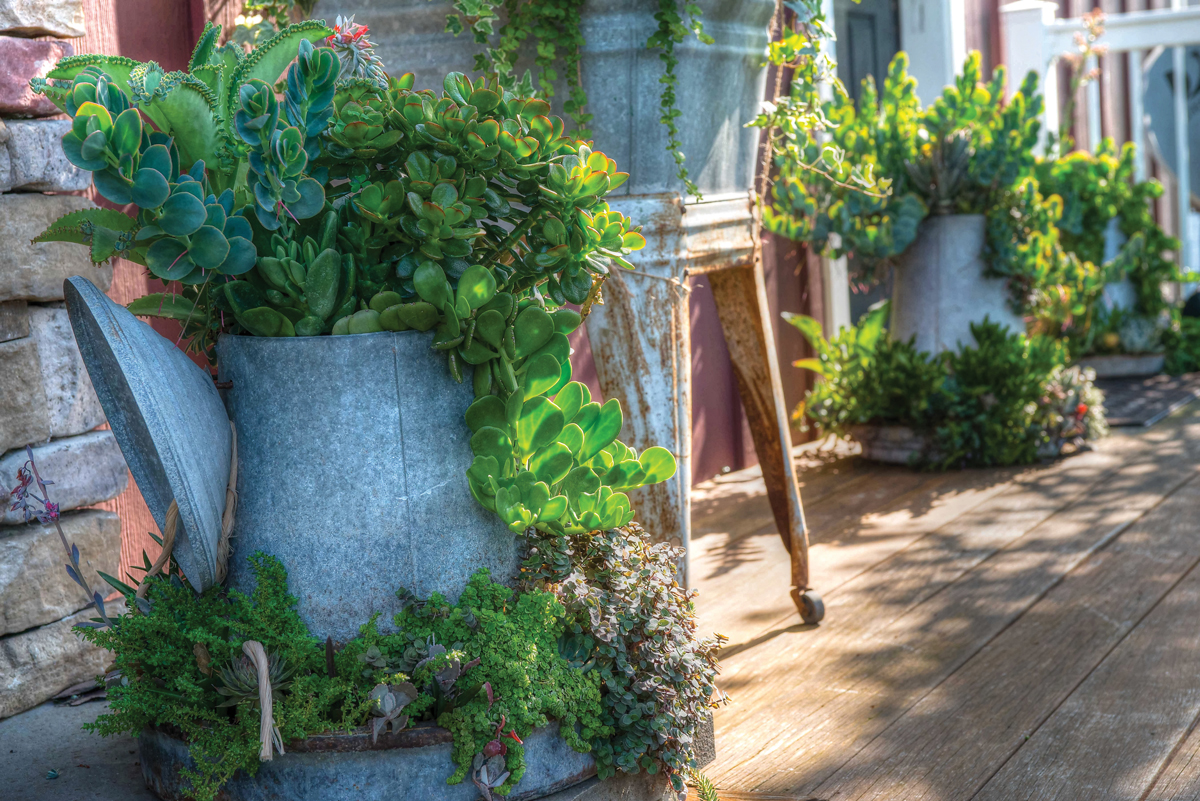
Kelsey’s green thumb extends to her love of combining succulents and other plants with unique containers that she “picks” from a variety of sources.
In the aftermath of the hail storm, the family began experimenting with growing flowering plants. Again, their main customer was the Leola Produce Auction. The operation grew to include seven greenhouses and several pergolas.
In 2001, Beth suggested they open a garden center on a short-term basis. Van agreed to fill one of the greenhouses with gardening plants and see what would happen over the course of five Saturdays. In need of a name, the Binkleys honored Van’s mother and father by calling the operation Tudbink’s.
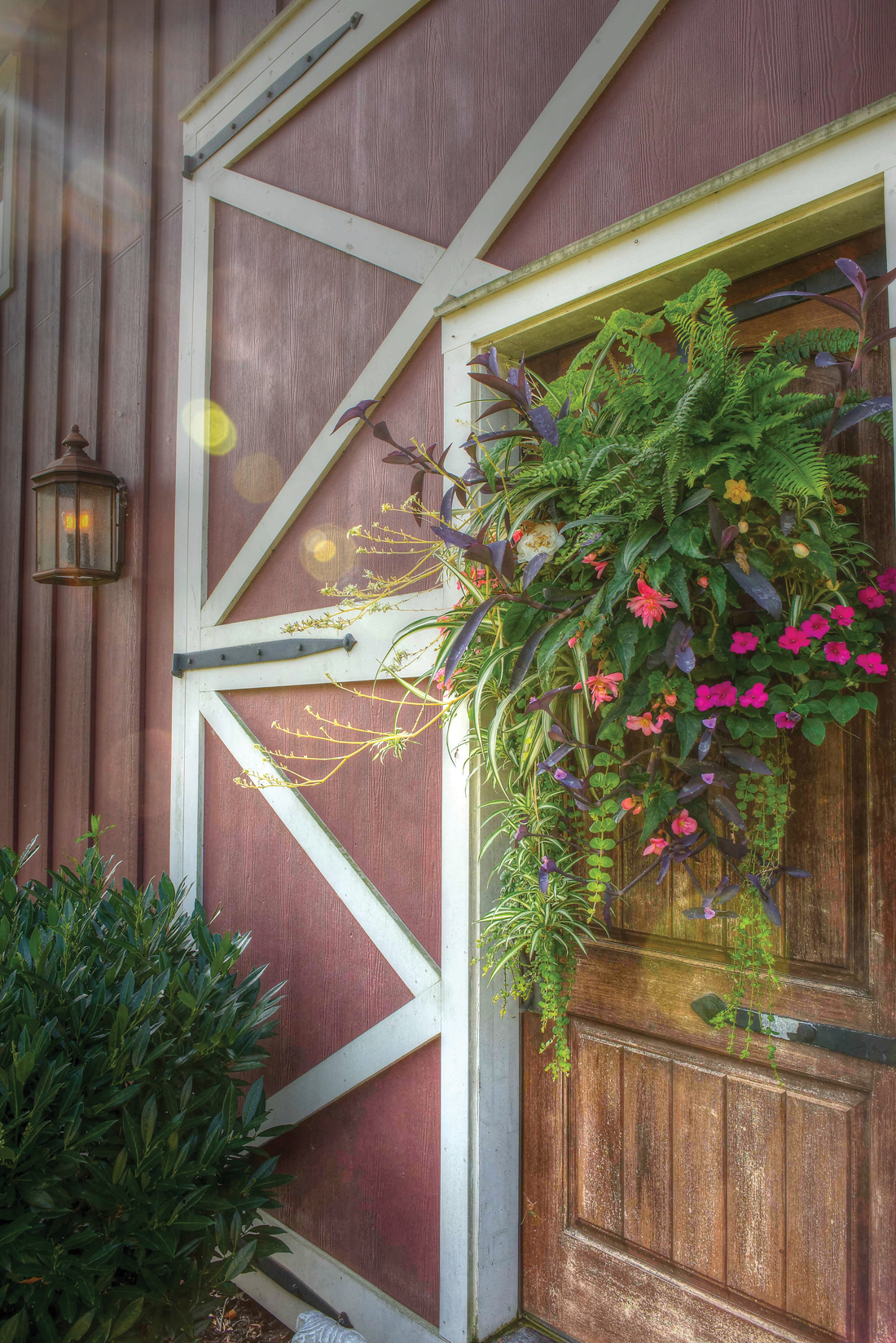
The property seen in this feature is a converted barn that became the temporary residence of Nathan Mountain and Glenn Taylor as a result of their home being flooded after a spring storm. Missing their gardens, Nathan and Glenn, who are regular customers at Tudbink’s, asked Kelsey to help them make their temporary digs feel like home. The plan was to “green-up” the deck and complement the barn with Kelsey’s signature containers. In addition, living wreaths that would add color and texture were designed for the doors. Because everything was mobile, Nathan and Glenn could easily transport the container gardens to their now-renovated home.
“On that first Saturday, I was up at Penn State and called home in the afternoon to see how things were going,” Van recalls. To his surprise, he was told that business had been steady all day and nearly 20% of the production area had been sold. Not bad for a place that’s in the middle of nowhere. The next year, they added Friday hours. Today, they are open Monday-Saturday from April to early July.
The Sheep’s in the Meadow …
Tudbink’s is also known for sheep. They entered their first show in Indiana in 1999. Kelsey was intrigued by the sheep from an early age and since she was homeschooled, she was able to spend a lot of time with them, even helping with lambing and assisting ewes who were having difficulty delivering their offspring. Her parents saw working with the sheep as a part of their daughter’s education. She became such an astute student of sheep that she soon developed the ability to predict which lambs would do well on the show circuit.
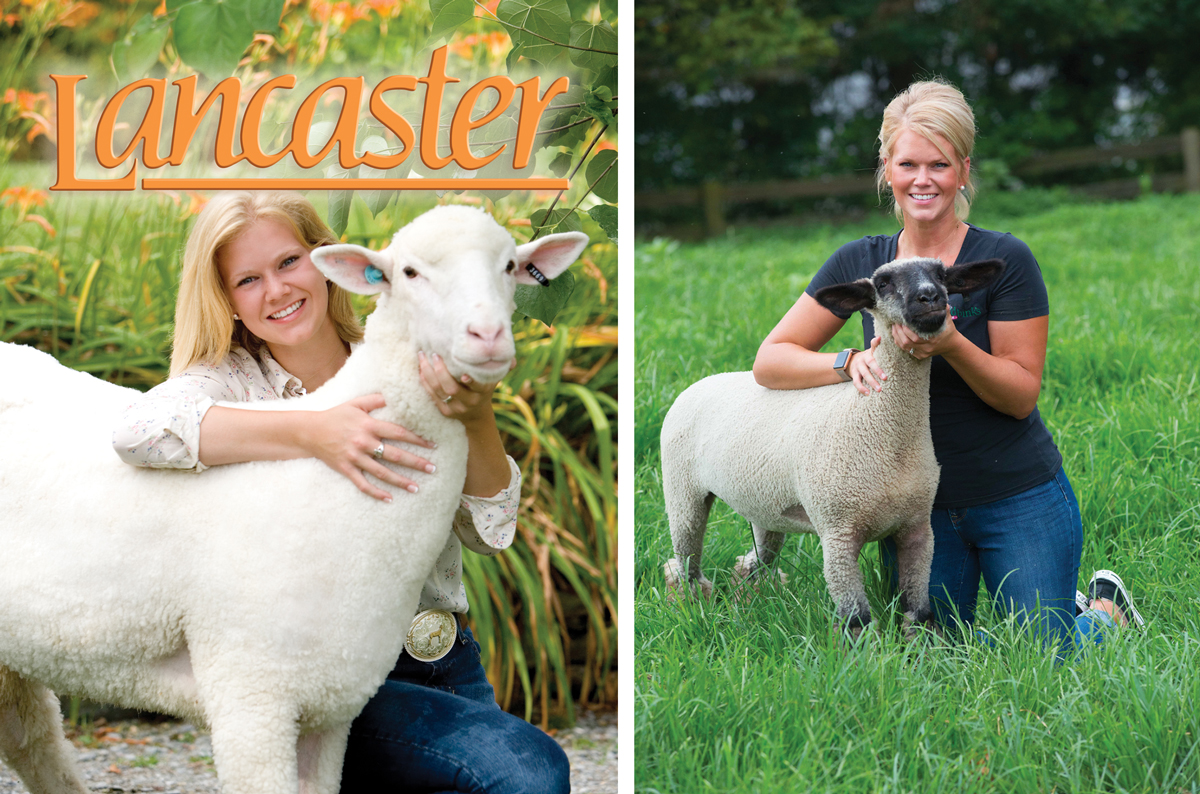
Kelsey appeared on the cover of Lancaster County Magazine in August 2005, with a Dorset sheep named River. Today, the farm specializes in Crossbred sheep.
Kelsey began competing on the fair/show circuit at the age of 9 and continued until she was 19. Success on the local circuit enabled Kelsey to spread her wings and compete all over the country.
Today, she remains involved by serving as a leader for the 4-H Woolies Club and as a private coach for youthful competitors. “A lot goes into raising sheep and competing,” she notes. “The successful kids put their hearts and souls into it. For them, it’s their sport.”
Tudbink’s Club Lamb website provides testament to the success of their breeding efforts – 2018 and 2019 were banner years, as sheep from Tudbink’s were grand champions, as well as winners in other classes, in both local and regional competitions.
Kelsey has hopes that her 3-year-old daughter, Avonlea, will follow in her footsteps. “She really likes the sheep and isn’t fearful of them,” Kelsey says. Time will tell.
The Binkleys have evolved from raising Dorset and other breeds to exclusively concentrating on Crossbred sheep. “I sometimes think about getting out of raising sheep, but once it’s in your blood, it’s hard to let go,” Van says. While lambing season is associated with spring, at Tudbink’s it falls between late January and early March. “We have some really busy nights,” Van says of lambing season. A sale of lambs is held in late March.
Speaking from a mom’s perspective, Kelsey enjoys seeing families visit the farm. “I think people come as much for the sheep as they do the flowers,” she says. “So often, I’ll see moms posing their kids for pictures with the sheep in the background. It’s nice.”
One Thing Leads to Another
When Kelsey finished her homeschool curriculum, she ventured off the farm to begin life as an adult. “I tried a variety of things including working as a hair stylist,” she says. Nonetheless, she found her true calling on the farm. “I just enjoy being outdoors and working with the sheep and flowers,” she says. The farm was also the site of her wedding to Andrew Skworch on June 20, 2015. “It was very laid back,” she notes. The two will welcome their second child this month.
Through the garden center, Kelsey discovered a talent for creating unique container gardens that combine succulents and other plants with finds that she “picks” from barns, junk piles and shops such as Bootleg Antiques in Columbia. Chicken feeders, boxes, troughs, ladles, baskets and even vintage toy cars provide her with the makings of her signature container gardens. “I’ve never met a container I didn’t like,” she states. “And, I love working with succulents.” She also leads workshops through which guests make their own container gardens.
Over the last 20 years, Tudbink’s roots have extended beyond being a garden center. When the Marriott on Penn Square and Lancaster County Convention Center celebrated their grand opening, Tudbink’s was asked to beautify the outdoor areas. City officials took note of the displays and the positive feedback they generated and approached Van about making it a full-time effort. “That was 11 years ago,” he says. “Now, we take care of the entire downtown area.”
The huge containers, which are owned by the city, are filled with dazzling displays of color and texture throughout the year. “We change them out seasonally,” he says. “And, we take care of everything – pest control, water, vandalism and replacing plants.” Crew members have become accustomed to fielding positive feedback. “I remember one person who was staying at the hotel approached me and said, ‘I’ve never seen anything like this,’” Van recalls. “I figure we gotta bring it – after all, Lancaster is regarded as the ‘Garden Spot of America.’”
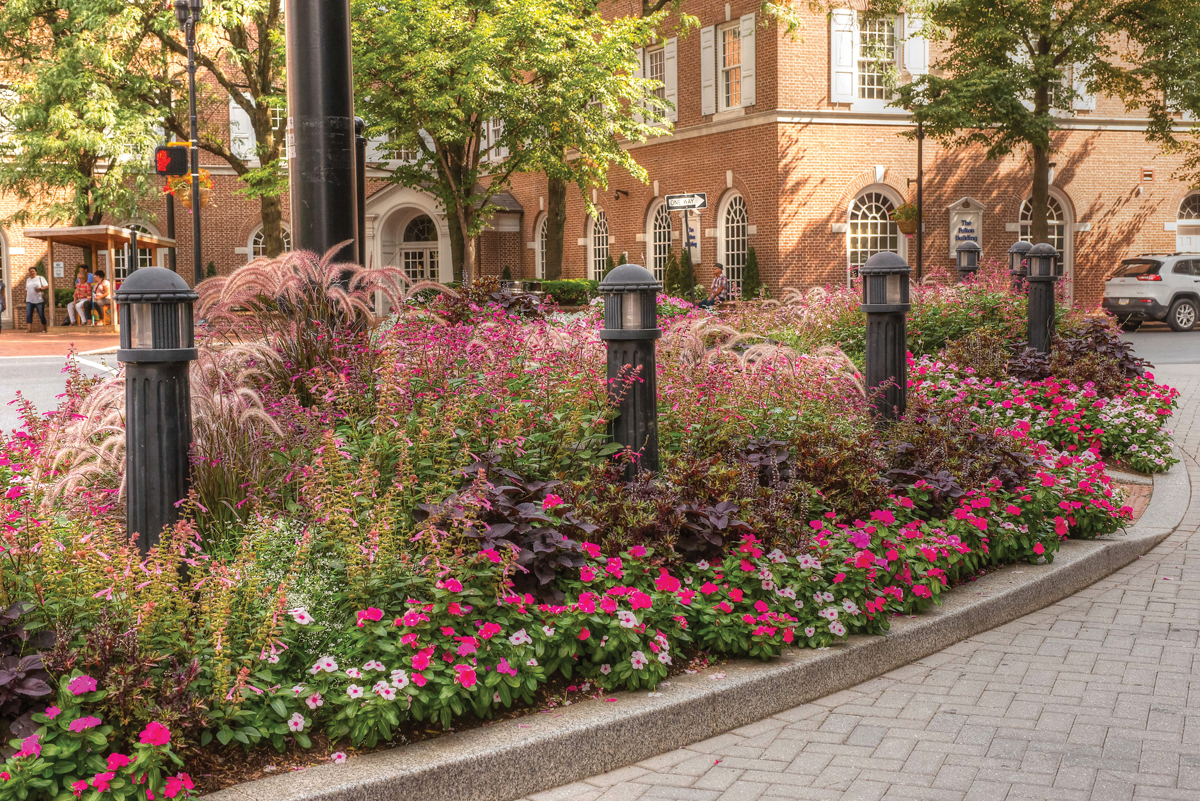
Lancaster City is alive with color and texture year round thanks to the efforts of Tudbink’s, whose staff plants and maintains the many containers that dot the downtown area.
Van is also noticing that the owners of individual shops, restaurants and office buildings are joining the movement by adding horticultural touches to the exteriors of their buildings. “It’s encouraging to see that,” he says, likening the results to what one might see in Europe.
Tudbink’s efforts have extended beyond center city. They now create displays for clients as diverse as the Water Street Mission, Tanglewood Golf Course and the Bent Creek community. Tudbink’s has also extended its services to landscaping (with urbanscaping being a specialty) and estate care.
Tudbink’s has also ventured into weddings by creating indoor gardens for ceremonies and receptions. While she has created a few tiaras made of succulents for brides, Kelsey says floral arrangements “are out of our wheelhouse” and instead recommends Christine Graham at Pollinate in Strasburg to clients.
Gardening in a New Millennium
According to the Binkleys, there is a new generation of potential gardeners aiming to perfect their knowledge of plants. “You know, a love for gardening seems to have skipped a generation,” Van says of the disconnect that seemingly occurred between the Baby Boom and Gen X generations. Whether you blame it on career drive, children’s schedules or the age of technology, the Millennials ultimately became the “indoor” generation. They seem to have lost that organic connection to nature and are ready – but nervous – about taking the plunge. “Latin names scare them,” Beth attests.
The Binkleys have also noticed that despite their lack of exposure and experience, the younger generation wants to achieve perfection out of the gate. “Part of the process is experimenting and going through trial and error,” Van theorizes. “They seem to want to bypass that. So, as a result, we find ourselves providing a lot of counseling and hand-holding.”
Fortunately, the Binkleys have modern-day horticulture on their side. “New varieties of plants are easier to grow,” he says. And, since a majority of the plants are grown on the farm and are “weather tested,” survival rates are very high. Some plants, like succulents and air plants – two Millennial favorites – are nearly maintenance-free. Tudbink’s famous hanging baskets are designed using “recipes” of plants that require similar light and moisture levels, thus making them almost foolproof whether you’re a seasoned gardener or a beginner.
Despite their inexperience, the Millennials are embracing gardening and are even adding their personal touch to outdoor spaces – they love houseplants and are moving them outdoors during warm-weather months. As a result, garden centers such as Tudbink’s are adding a wide selection of tropical plants to their inventory. “We grow 85% of our product and bring in tropicals,” Van says.
Tudbink’s is located at 610 Stone Hill Road in Conestoga. The garden center will open for the season on Friday, April 10, and remain open until early July. Hours are Monday-Friday, 9 a.m.-8 p.m., and Saturday, 9 a.m.-6 p.m. Call 717-872-2126 or visit tudbinks.com for more information. For information about Tudbinks Club Lambs, visit tudbinksclublambs.com.





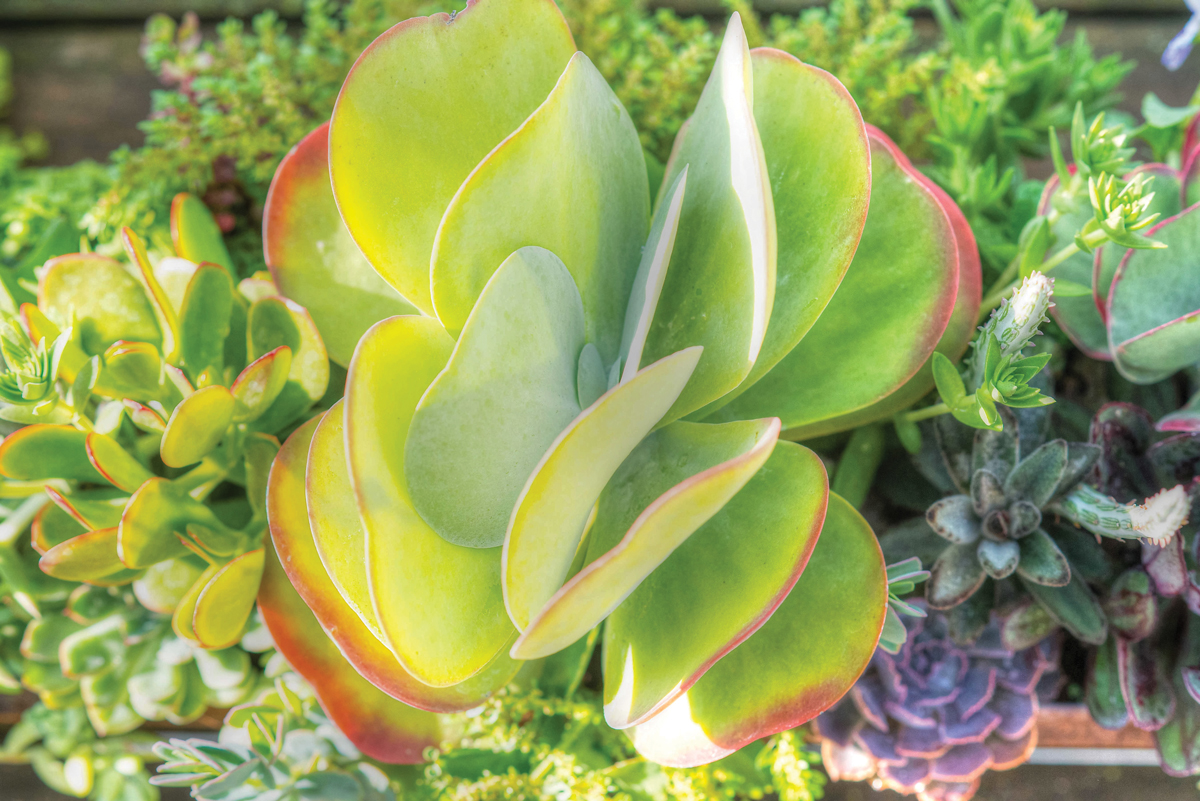
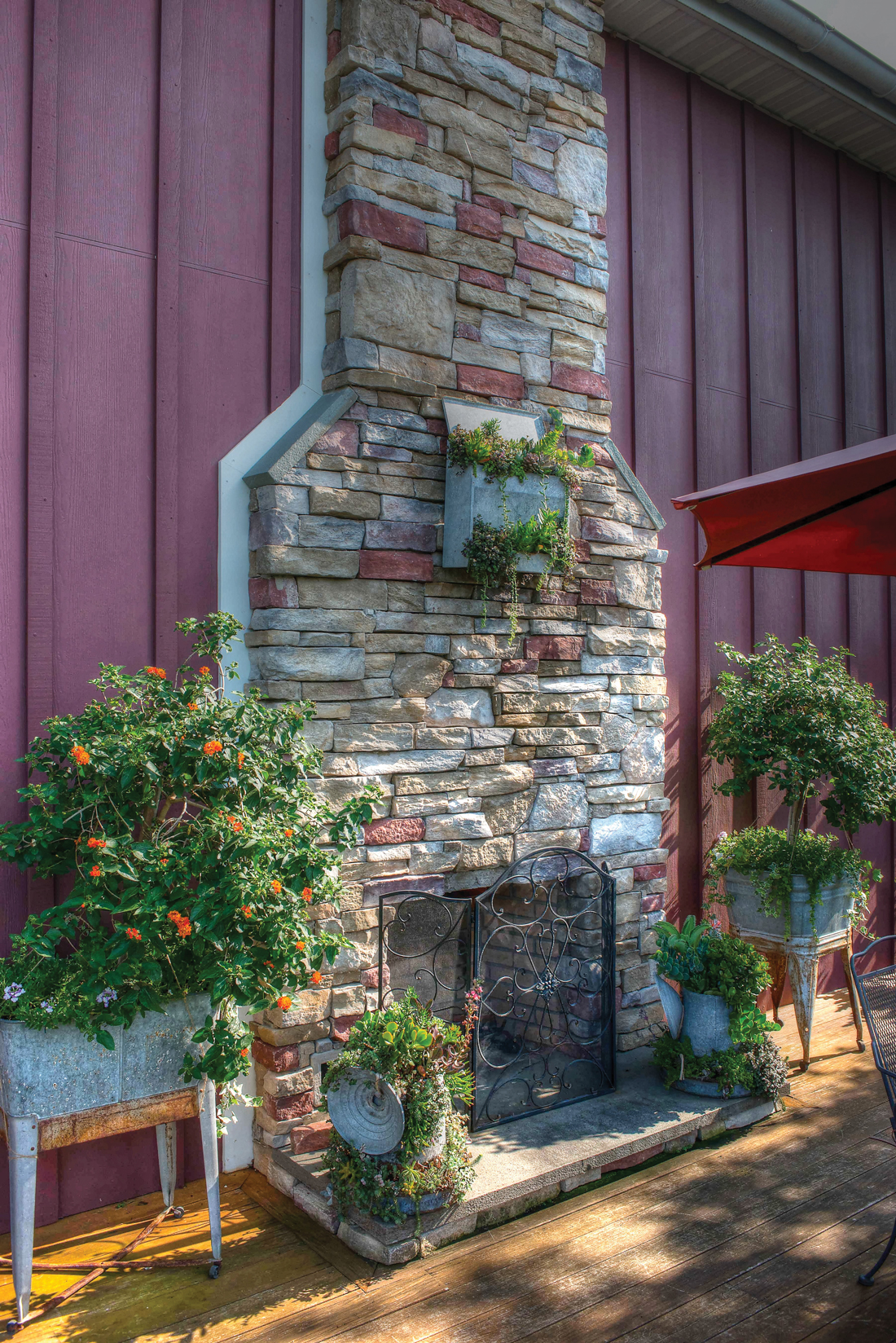
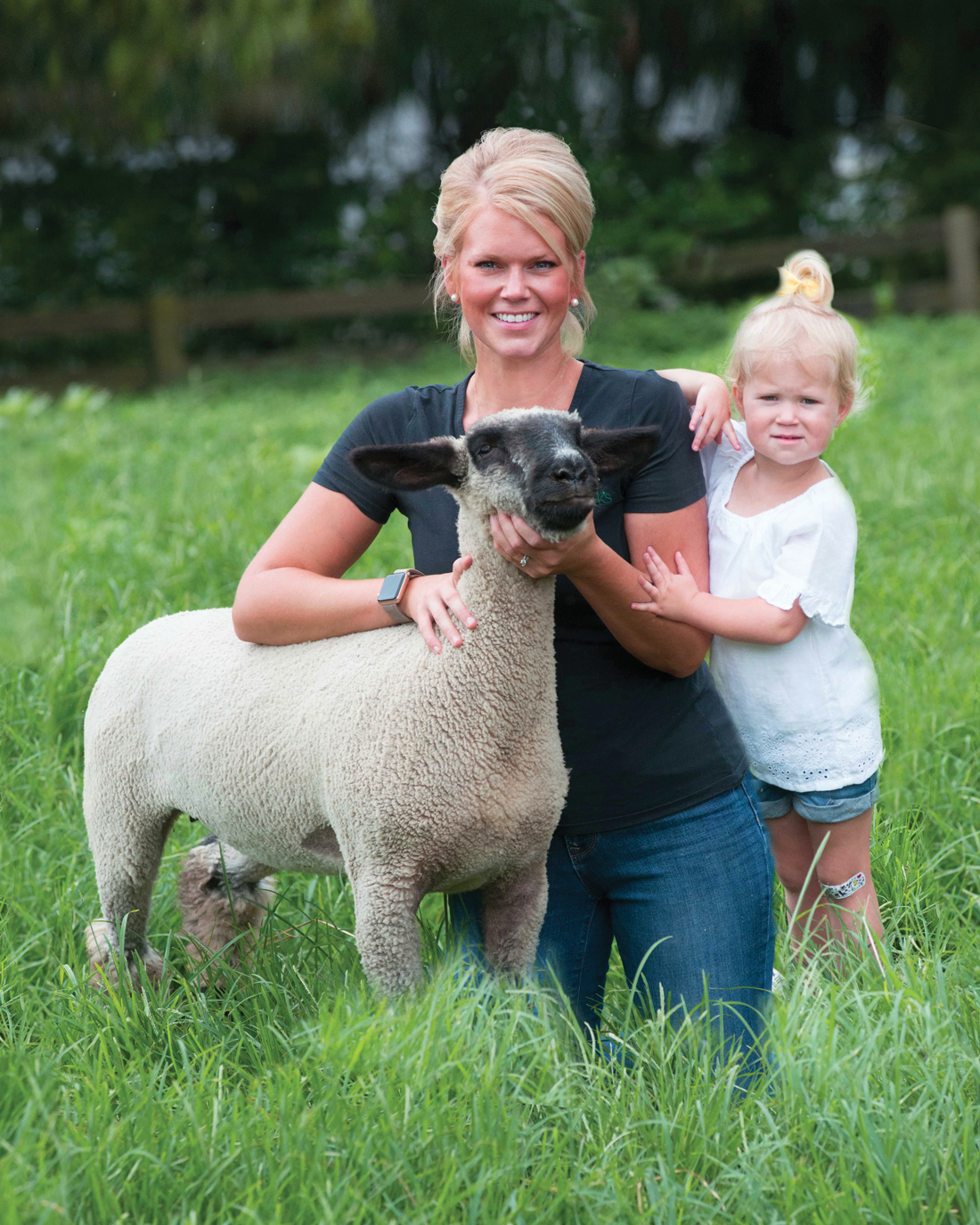
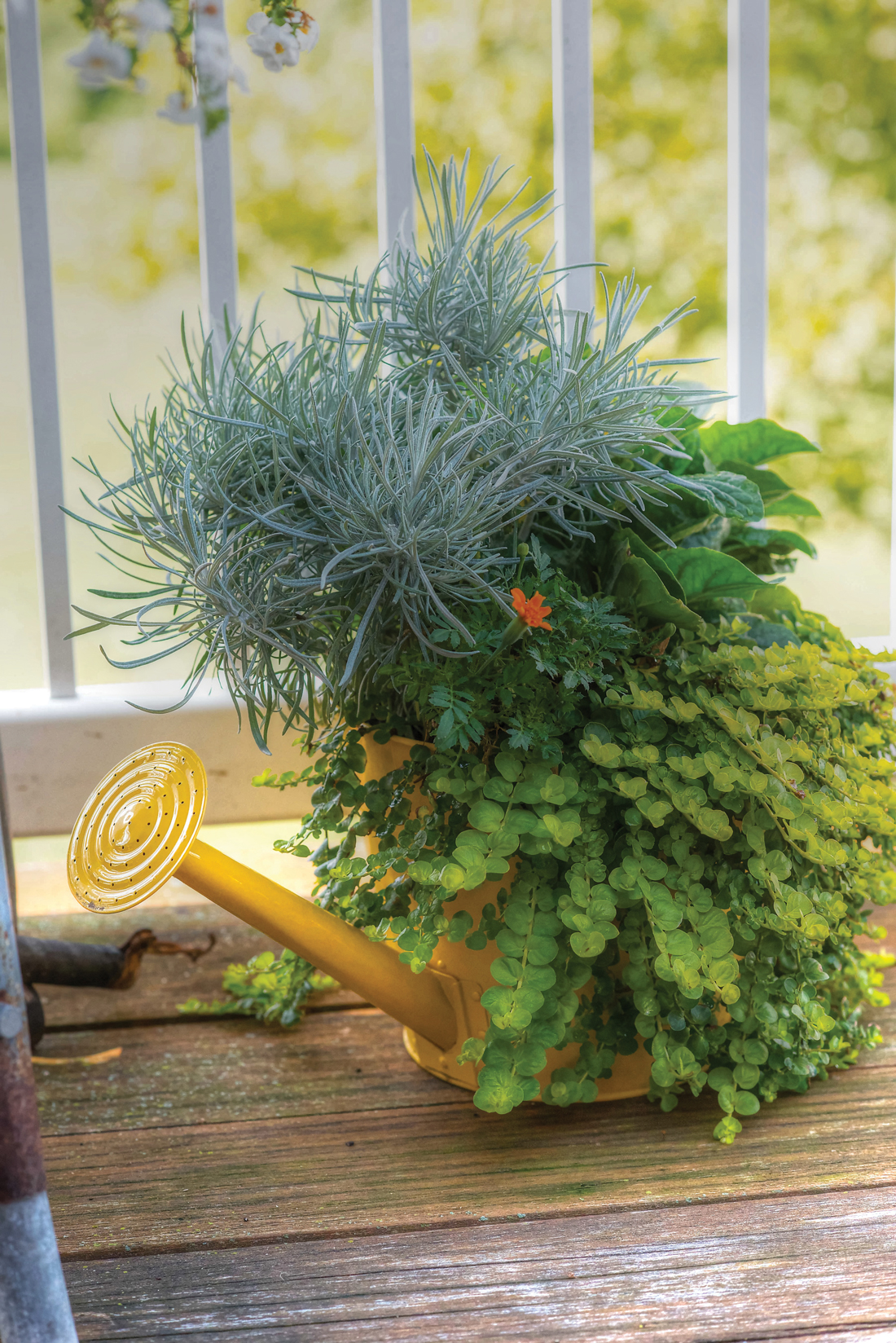
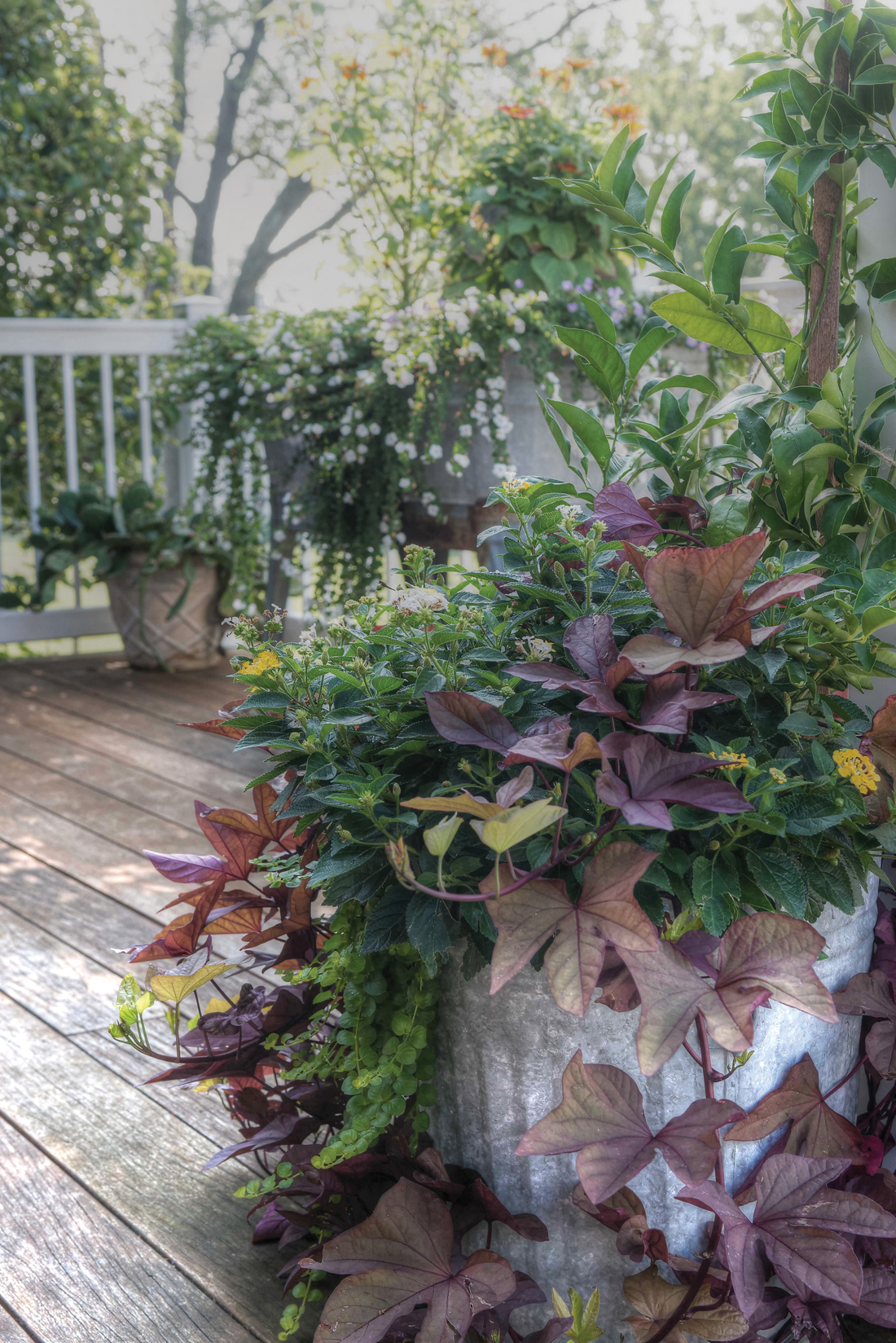
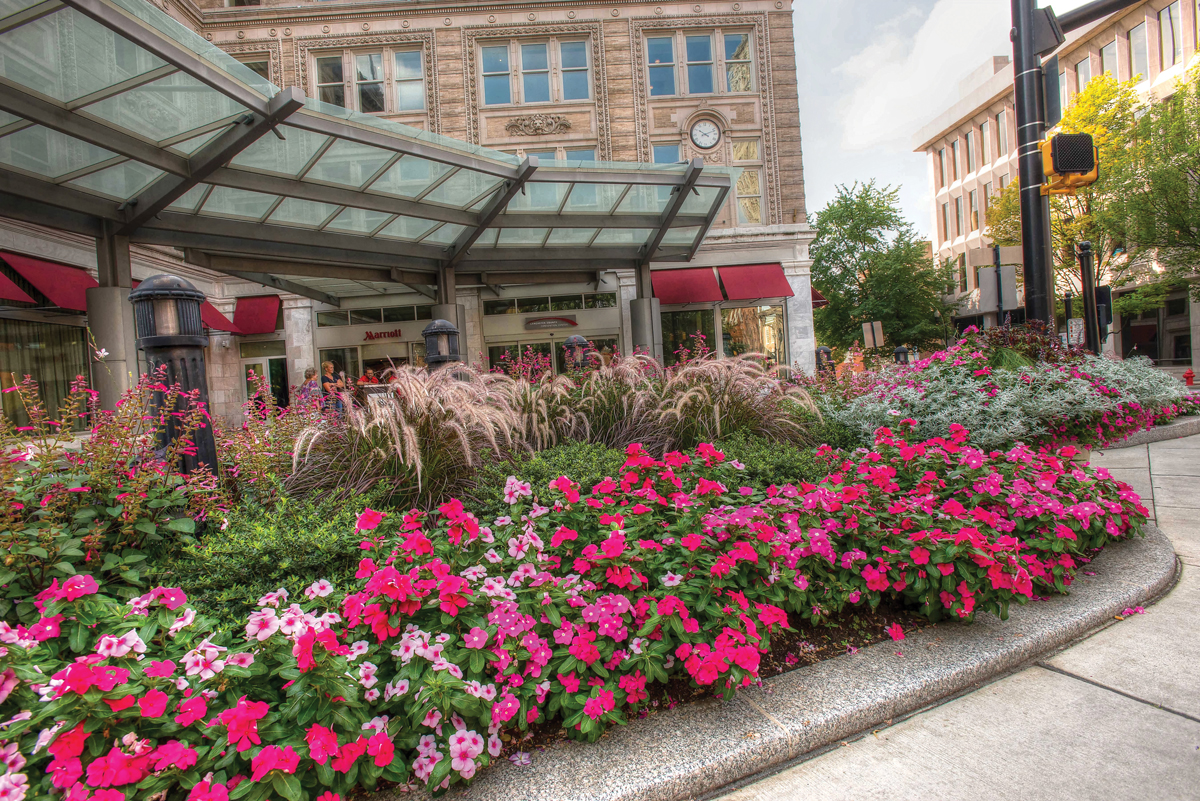
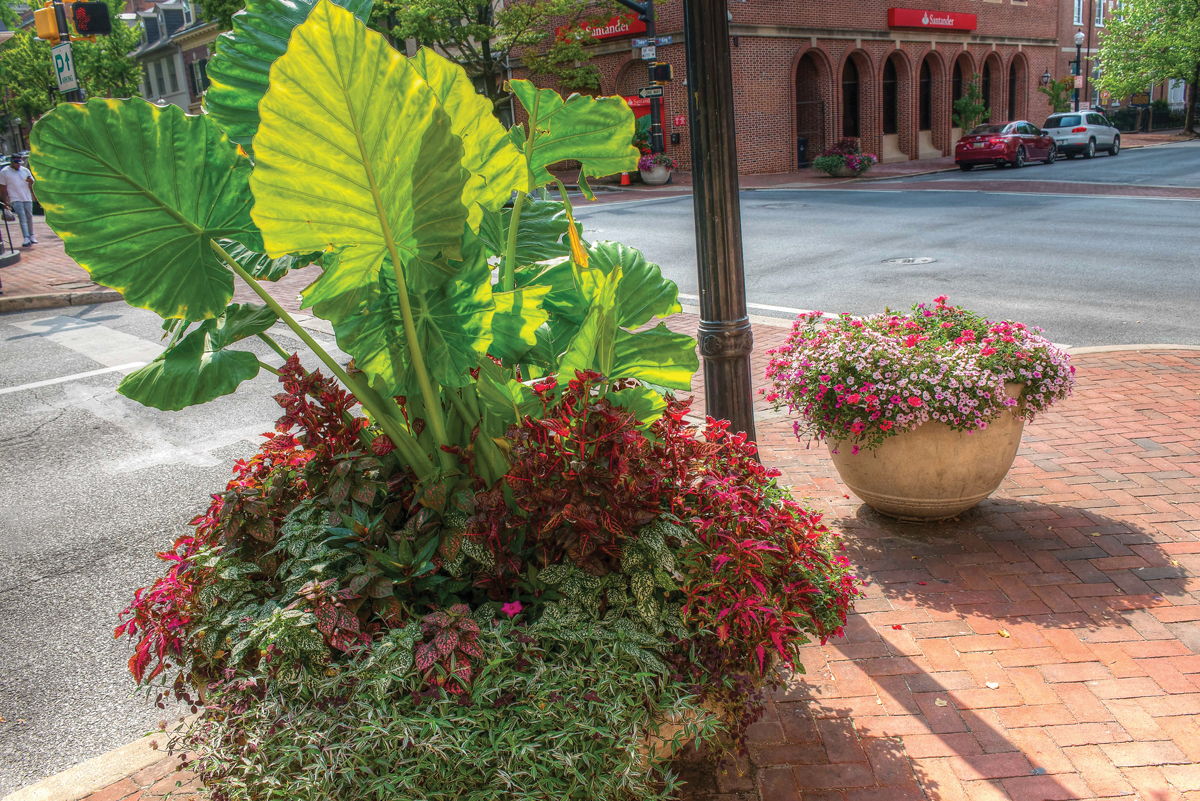
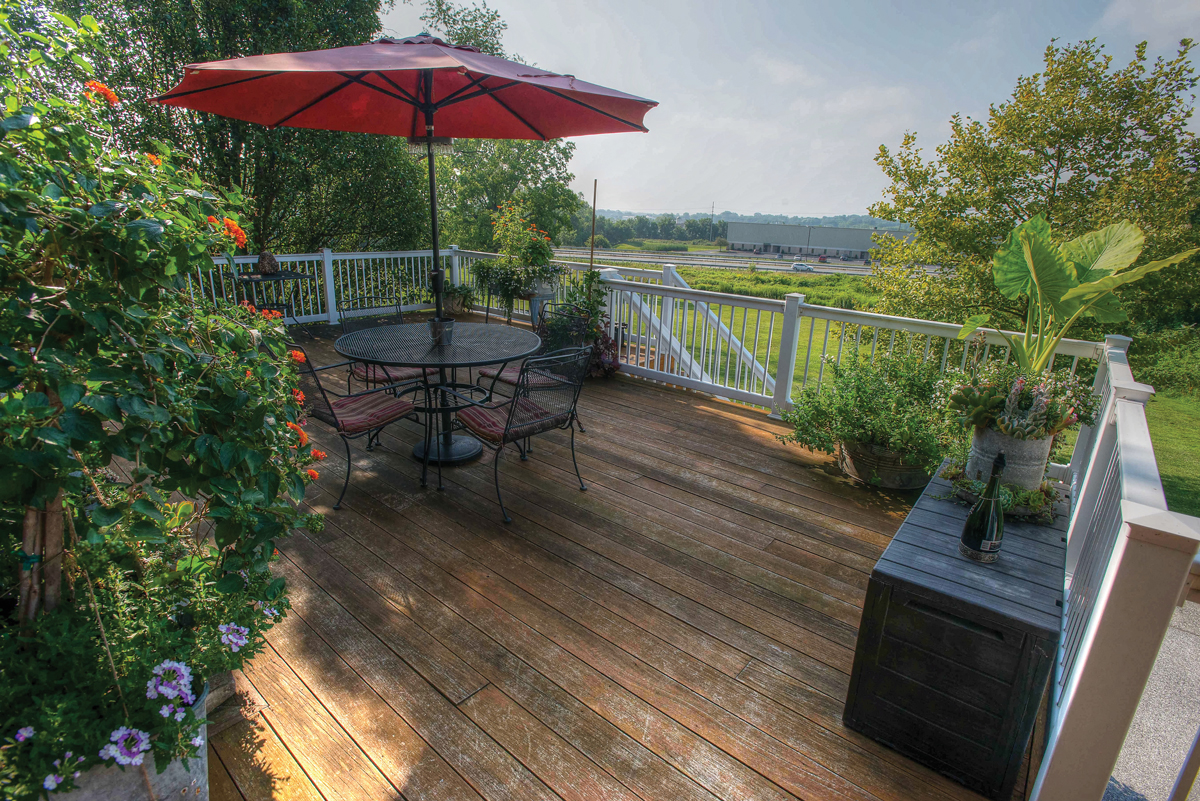
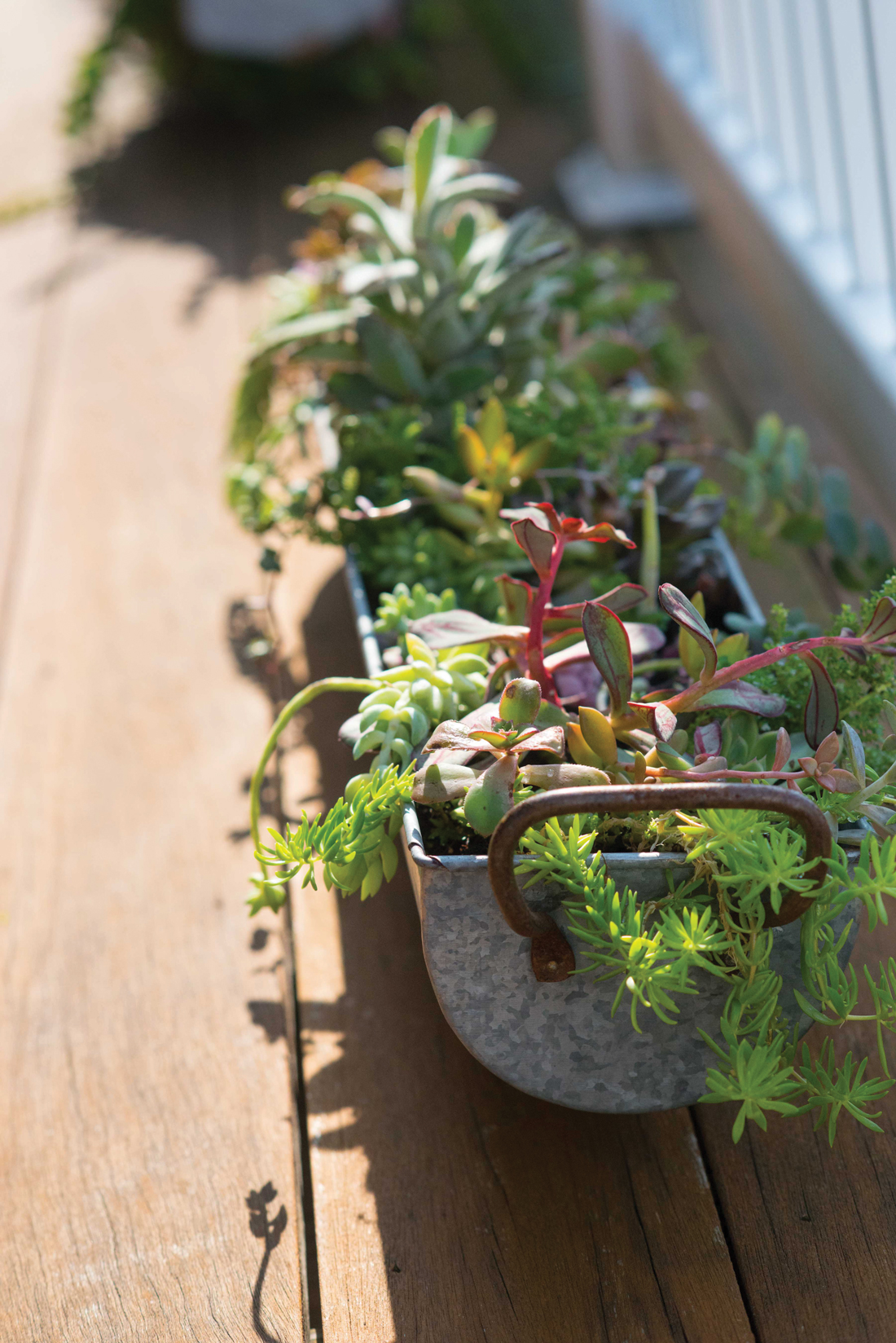
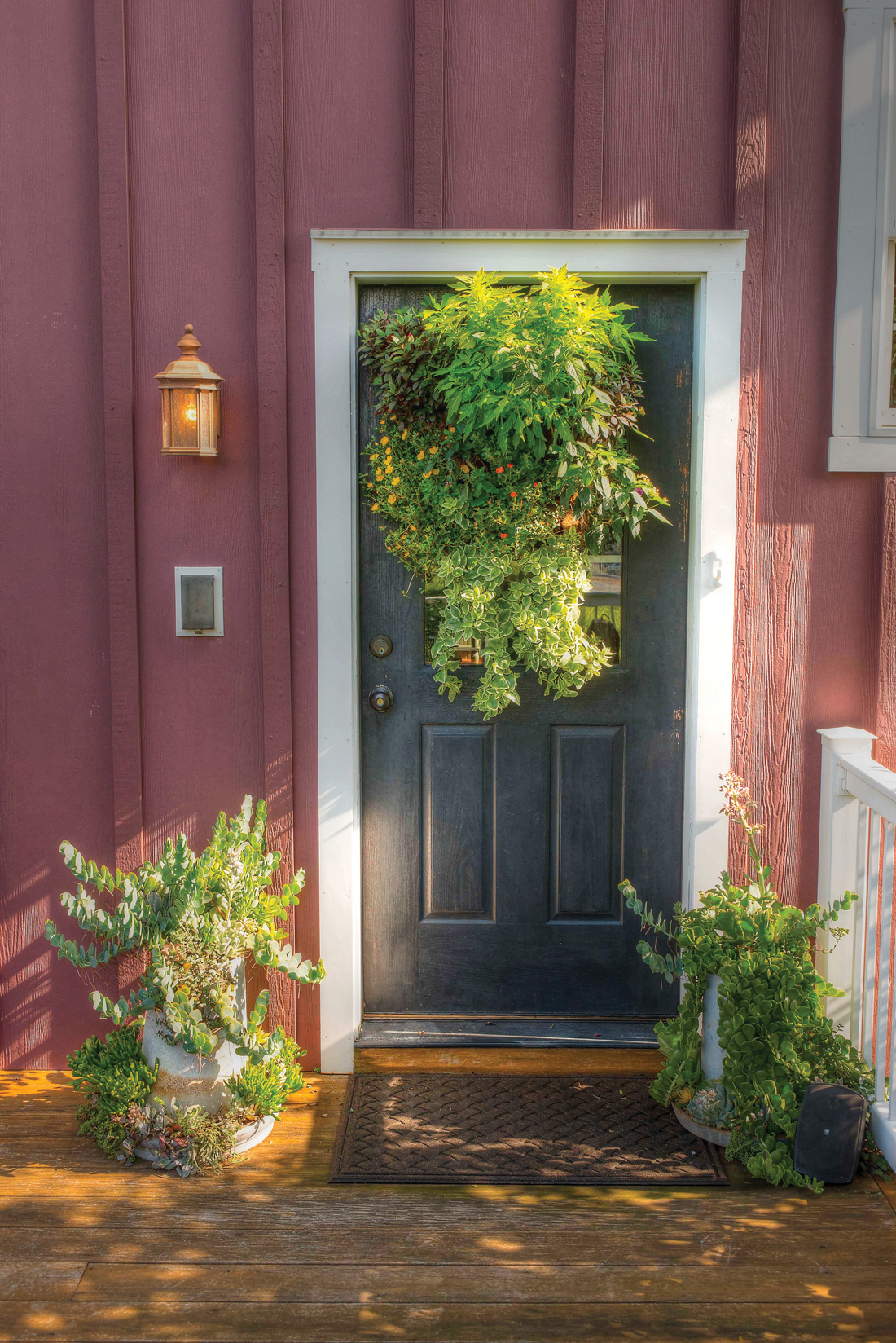
I am thankful for the Binkley family. Over the years he has employed and taught many of the area youth about the business. My son had his first job picking tomatoes for Van and was soon promoted and put in charge of harvesting watermelons. He learned a lot about hard work and had an opportunity to work with his hands an be out doors. Inspired by this early love of plants, he went on to become a landscape architect who still does a lot of hands on landscaping on the weekends. Van could have easily brought in cheaper migrant workers to harvest, but instead he chose to invest in the local youth.